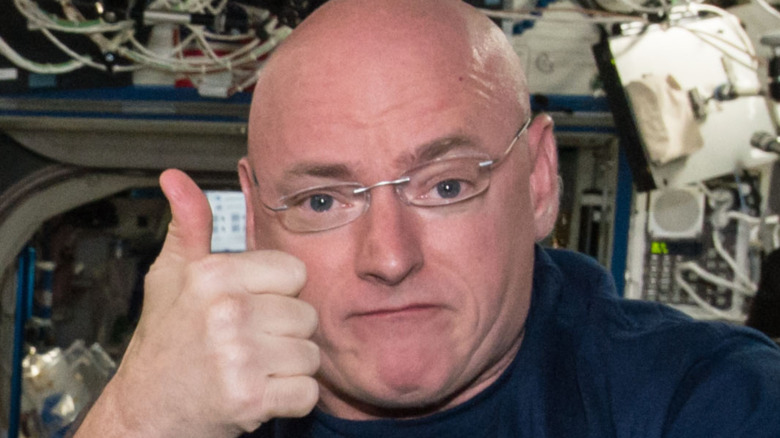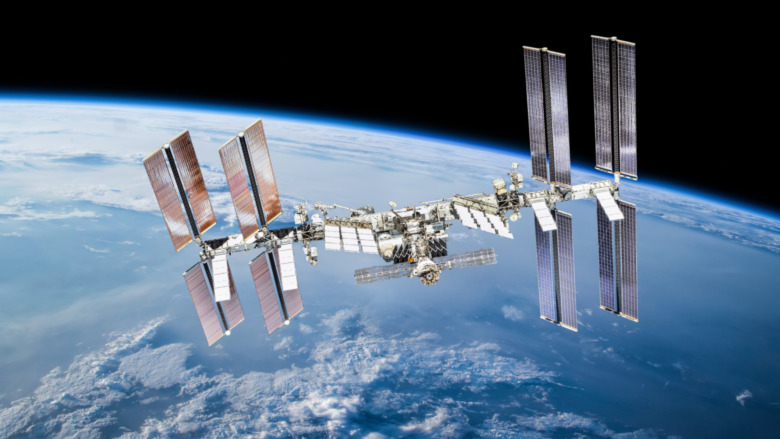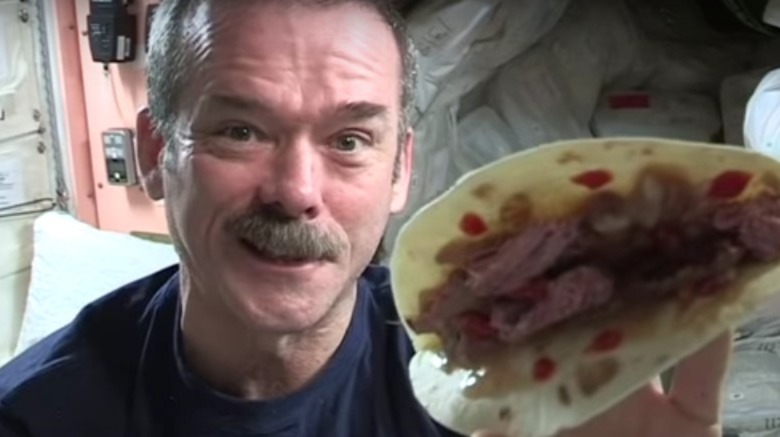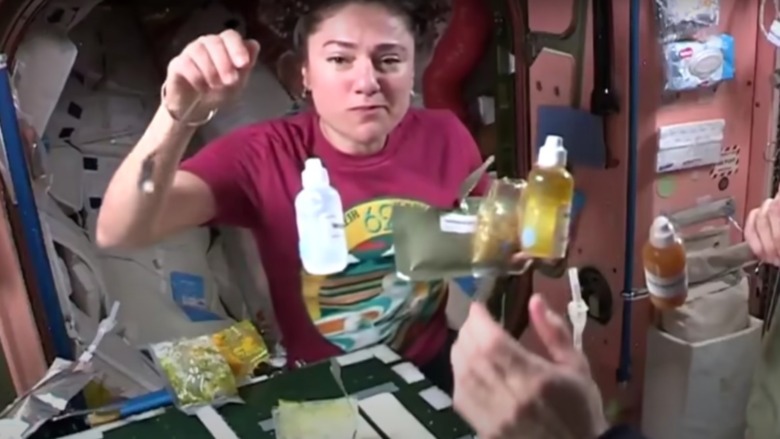Space Food Is Nothing Like It Used To Be. Here's Why
The food served to astronauts in space has improved leaps and bounds from the early years of the U.S. and Soviet space programs. During those heady days, astronauts were lucky to get anything at all (on shorter flights), and what they did get was pretty simple. For example, the USSR's Yuri Gagarin ate pureed beef out of a toothpaste-like tube, according to The New York Times, while the USA's John Glenn got applesauce.
These days, the agencies that manage the food on space flights have considerably more on their plates (no pun intended) to consider than just keeping an astronaut alive for a few hours while in flight. Astronauts are up there for months at a time and thus not only require more food, but a wider variety of foods to eat, in particular when special occasions such as birthdays or holidays might arise. Similarly, astronauts from different countries do stints in space, so the various space agencies have to consider the space travelers' cultural dietary requirements.
This is the story of how space food has changed over the years.
Developing food for astronauts and getting it into space is quite literally a science
Developing a menu for astronauts, producing the food, and then delivering it into orbit is, in the most literal possible sense, a science. As NASA explained, a whole team of its people work in its food division.
The team has to consider a host of issues. For example, space food must be lightweight and easily transportable, which means that it's often freeze-dried, requiring the astronauts to add water to it onboard the spacecraft before eating it. The food must also have a shelf-life of several months, which is why it's either dehydrated or, in some cases, sent up in cans. Due to the lack of gravity, foods that are likely to disintegrate into crumbs must be avoided at all times. And of course, the limited space for heating the food, and indeed, even eating it, has to be taken into consideration.
What's more, the food must meet the demands of the astronauts' rigorous and demanding work schedule in space. "[Astronauts] are high-performance athletes," French chef Thierry Marx told The New York Times.
Space agencies must consider the astronauts' cultural requirements
Considering that it's not just American (and Russian) astronauts going into space, the cultural requirements of the astronauts, when it comes to food, have to be considered when sending meals up into space.
"[Space food] needs to remind people of their experiences of eating food on Earth. It reminds them of all those good things in this really stressful spaceflight environment," said Ryan Dowdy, who worked in NASA's food division. He told The New York Times that there are 200 different menu options for astronauts to choose from, in order to avoid monotony.
French astronaut Thomas Pesquet, who was launched to the International Space Station on April 23, will be eating the cuisine of his home country while in orbit. What's more, his menu was developed by French Michelin-star chefs. "There's a lot of expectations when you send a Frenchman into space," said Pesquet, who unfortunately will have to do without another French staple — wine — while he's in orbit — alcohol is not allowed up there.
Space Navigator reported that while in space, Muslim astronaut Hazza al Mansoori ate halal food. Halal translates as "permissible" — food that "adheres to Islamic law" found in the Qur'an, reports the BBC.
Astronauts eat particularly well on special occasions
Since astronauts are now spending months in space at a time, it's not unlikely that a special occasion — a birthday, a religious holiday, a national holiday — will occur while the traveler is in orbit. As such, the various space agencies have developed special occasion menus for their astronauts. For example, according to The New York Times, Monsieur Pesquet will enjoy lobster, beef bourguignon, cod with black rice, potato cakes with wild mushrooms, and almond tarts with caramelized pears — on special occasions, that is. What's more, his team in France upped the portion size of those special meals so he can share them with his colleagues. "Obviously, all my colleagues are expecting good food," Pesquet said.
Similarly, American astronauts are often in-flight on Thanksgiving Day, but that doesn't mean they have to skip the holiday's traditional meal spread, according to ABC News. The USA's finest get to enjoy sliced turkey, candied yams, apricot cobbler, and other foods traditionally eaten on the holiday. Further, astronauts say that, though it comes in a pouch, it's pretty close to the real thing.
Of course, food can mean more than nutrition, or even taste; there's often symbolic value as well. "A special occasion like this takes on a great deal of psychological importance as well — it's a time of rest, relaxation and camaraderie," said Dr. Bonnie Dunbar, a retired NASA astronaut and current professor at A&M's Department of Aerospace Engineering.



